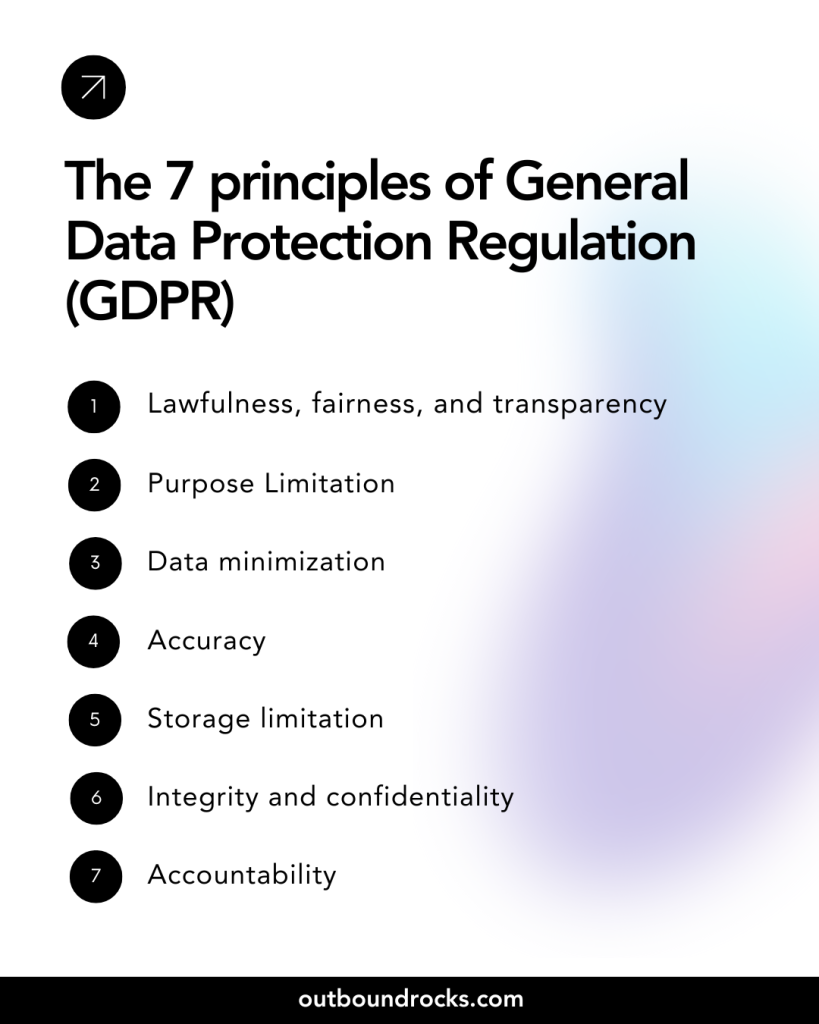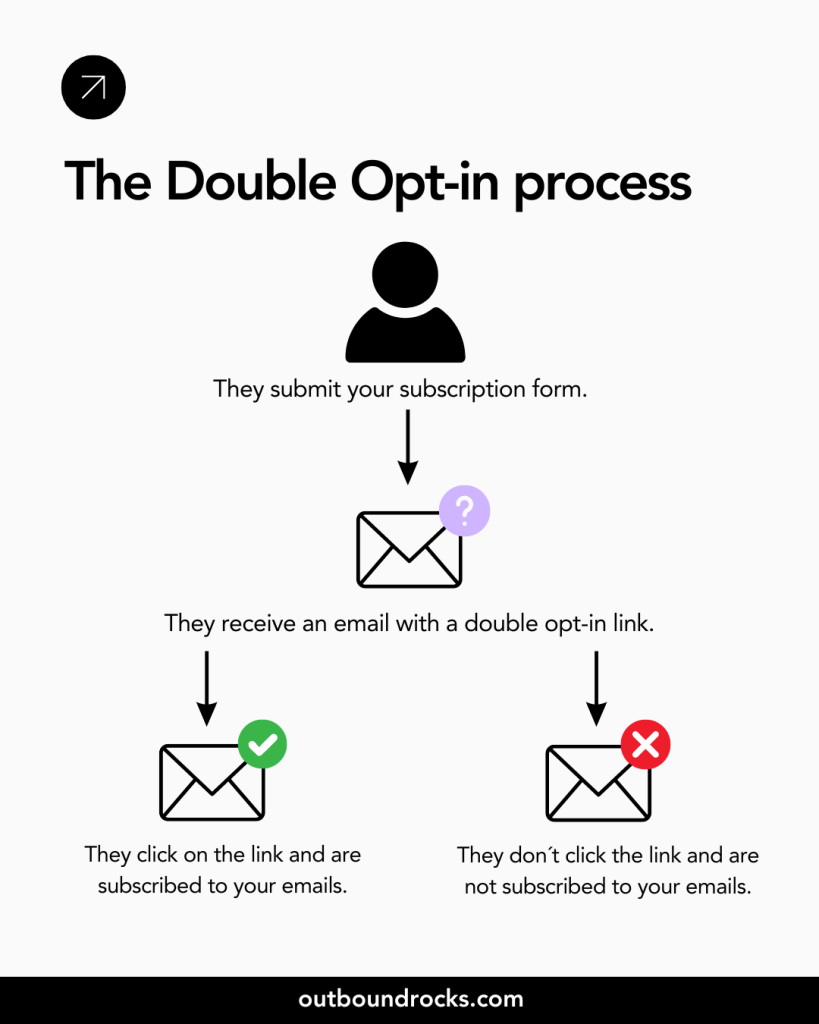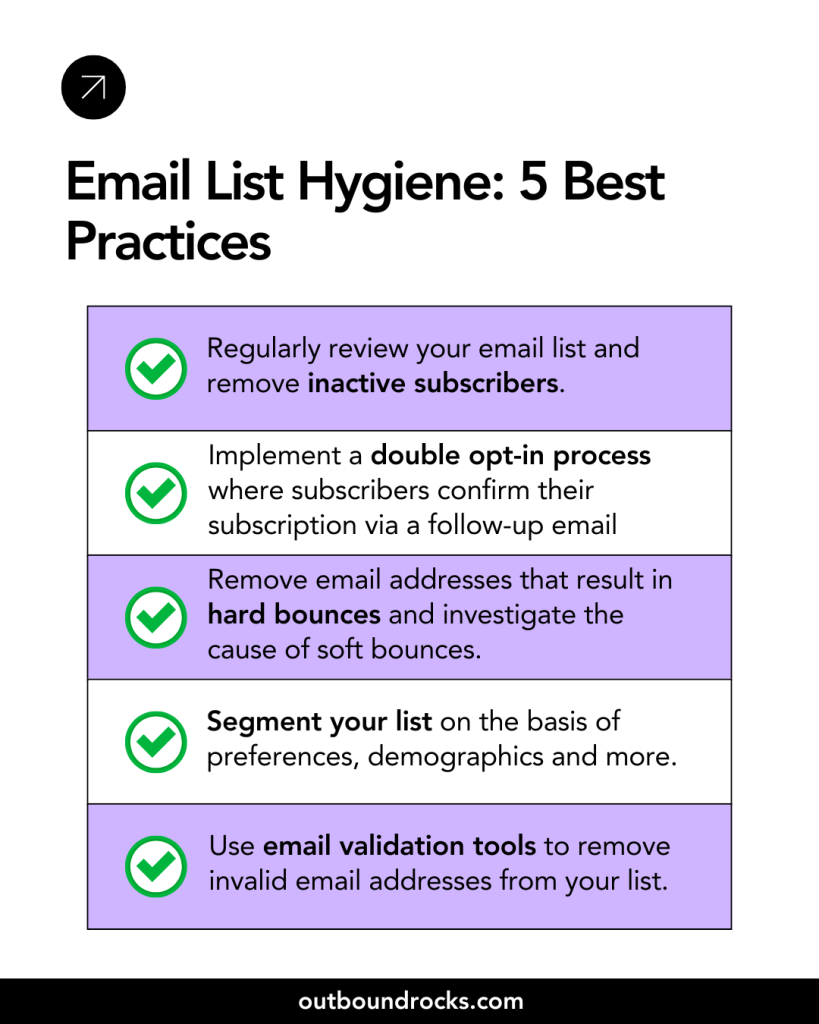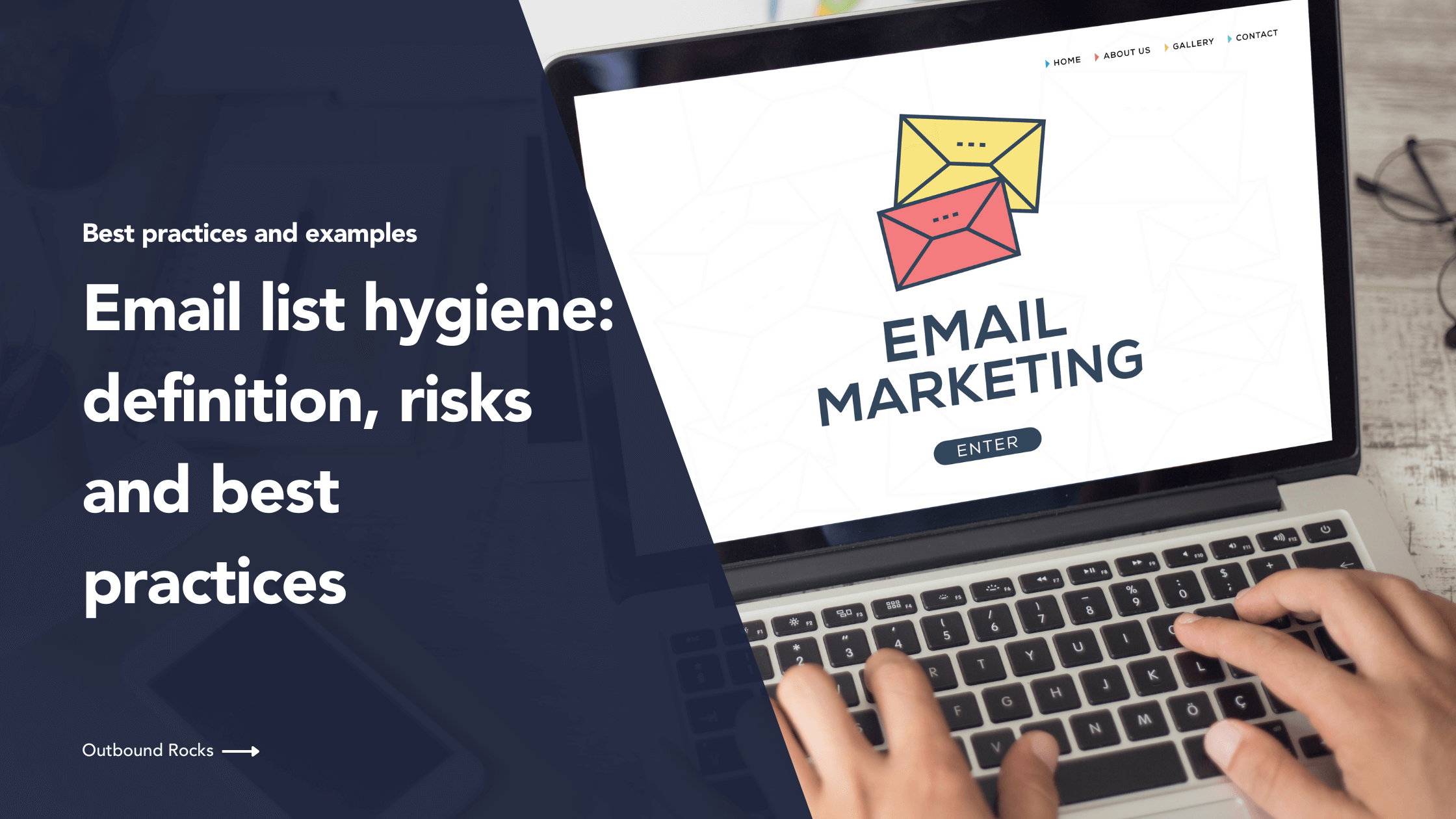Maintaining a clean email list is critical to the success of your email marketing campaigns. In addition, understanding the definition, risks and best practices of email list hygiene can significantly improve your outreach efforts.
In this article, we’ll look at why regular email list cleansing is so important, the potential dangers of neglecting it, and when to perform this vital task.
Read on to optimise your email marketing strategy and get better results!
TABLE OF CONTENTS
– What is email list hygiene?
– The risks of poor email list higiene
– When should you conduct email list hygiene?
– Best practices for email list cleaning
– Conclusions
What is email list hygiene?
Email list hygiene is the regular practice of cleaning and maintaining your email subscriber list to ensure it is up-to-date, accurate and engaged.
This process involves removing invalid, inactive or unresponsive email addresses, correcting any errors in the email data and ensuring compliance with email marketing regulations.
The risks of poor email list hygiene
Neglecting email list hygiene can lead to a number of problems that can significantly undermine the effectiveness of your email marketing campaigns.
Here are some of the key risks associated with poor email list hygiene:
a) High bounce rates
If your email list contains invalid or outdated addresses, many of your emails will bounce back as undeliverable.
A high bounce rate signals to email service providers (ESPs) that your list is poorly maintained, which can lead to deliverability problems.
b) Spam complaints
Sending emails to uninterested or unengaged recipients increases the likelihood that your emails will be marked as spam.
High spam complaint rates can damage your sender reputation and cause your future emails to be automatically filtered into spam folders.
c) Lower engagement rates
An unclean list often contains inactive or uninterested subscribers who are unlikely to open or interact with your emails.
This results in lower open and click-through rates, reducing the overall effectiveness of your campaigns and distorting your performance metrics.
d) Damaged sender reputation
ESPs monitor the quality of your email delivery practices. High bounce rates, low engagement and frequent spam complaints can lead to a damaged sender reputation.
A poor reputation can result in your emails being blocked or routed to spam folders, severely limiting your ability to reach your audience.
e) Compliance issues
Email marketing regulations, such as the General Data Protection Regulation (GDPR) and the CAN-SPAM Act, require you to maintain accurate and up-to-date email lists.
Failure to do so can result in legal consequences, including fines and penalties.

When to clean your mailing list
According to Mailgun’s State of Email Deliverability survey, a total of 38.7% of senders surveyed rarely or never practice list hygiene.
This is a big mistake.
Email list hygiene should be a regular part of your email marketing strategy to ensure your list remains clean, accurate and engaged.
Here are the key times and situations when you should prioritise email list hygiene:
- Regular intervals: Set a schedule to clean your email list on a regular basis, such as monthly or quarterly. Regular maintenance helps catch problems early and keeps your list in tip-top shape, ensuring consistent deliverability and engagement rates.
- Before major campaigns: Before launching any major email marketing campaigns, especially those targeting a large segment of your list, perform a thorough cleansing. This will ensure that your messages reach active and interested recipients, maximising the effectiveness and ROI of the campaign.
- After a significant increase in subscribers: If you’ve recently gained a large number of new subscribers, it’s a good idea to cleanse your list soon after. This will help remove any invalid or fake email addresses that may have slipped through during the subscription surge.
Don’t forget to conduct email list hygiene when:
- After a high bounce rate: If you notice a sudden spike in your email bounce rate, it’s a clear sign that your list needs cleaning. High bounce rates can damage your reputation as a sender, so it is important to address this issue immediately.
- Before seasonal campaigns: For businesses that rely on seasonal marketing (such as holiday promotions), cleanse your list before these peak periods. This will ensure that your promotional messages reach the most responsive and relevant audience, increasing the success of your seasonal campaigns.
- When switching email service providers: If you’re moving to a new email service provider, cleanse your list before the transfer. This will prevent the new provider from flagging your account for high bounce rates or spam complaints.
- After updating subscription forms: Whenever you update or change your subscription forms, it’s a good idea to cleanse your email list. This helps to ensure that the information collected through the old forms is still relevant and accurate.
In summary, regular and strategic email list hygiene is essential to maintaining a healthy and effective email marketing programme.
Best practices for email list cleaning
Maintaining a clean email list is crucial for effective email marketing. Here are some best practices to ensure your email list hygiene remains top-notch:
1. Regular verification
Use email verification tools to regularly check the validity of your email addresses.
These tools such Outbound Rocks can identify and remove invalid, fake, or mistyped email addresses, ensuring your list is accurate and up-to-date.
2. Segmentation and targeting
Segment your email list based on subscriber behavior and engagement levels. By targeting active and engaged segments, you can tailor your content to specific audiences, improving open and click-through rates.
Periodically review and clean these segments to keep them relevant.
3. Engagement monitoring
Track subscriber engagement metrics such as open rates, click-through rates, and conversion rates. Identify and remove inactive subscribers who haven’t engaged with your emails over a specified period.
This helps maintain a high level of engagement and reduces the chances of your emails being marked as spam.
4. Re-engagement campaigns
Run re-engagement campaigns to win back inactive subscribers. Send targeted emails with special offers, surveys, or compelling content to encourage them to re-engage.
If they remain unresponsive, consider removing them from your list to keep it clean.
5. Double Opt-In
Implement a double opt-in process for new subscribers. After they sign up, send a confirmation email requiring them to verify their subscription.
This ensures that your list consists of genuinely interested and valid email addresses.

6. Easy unsubscribe options
Make it easy for subscribers to unsubscribe if they no longer wish to receive your emails.
Clearly visible and straightforward unsubscribe options help maintain a positive sender reputation and reduce spam complaints.
7. List scrubbing
Periodically scrub your list to remove duplicates, inactive addresses, and role-based emails (e.g., info@company.com). This helps maintain a high-quality list and improves deliverability.
8. Data hygiene protocols
Establish data hygiene protocols for manual and automated data entry processes. Ensure that email addresses are entered correctly and consistently to avoid errors that could lead to bounces and spam complaints.
9. Compliance with regulations
Adhere to email marketing regulations such as GDPR and CAN-SPAM Act. Obtain explicit consent from subscribers, provide clear opt-out options, and honor unsubscribe requests promptly.
Compliance helps build trust and protects your sender reputation.
10. Use email hygiene services
Consider using professional email hygiene services that offer advanced cleaning solutions. These services can help identify and remove harmful email addresses, spam traps, and other problematic entries that can harm your email deliverability.

Conclusions
By following these key points, you can improve your outbound strategy and generate more leads for your business.
Don’t leave deliverability and list hygiene to chance.
Use the best tools, like Outbound Rocks, to make sure the job is done right. Visit outboundrocks.com, fill out the form and try our demo for free.
